By Jim Olson, Western Trading Post.
Photos Courtesy of Western Trading Post
The word concho, sometimes spelled concha, comes from the Spanish word meaning shell. Some of the first “conchos” were made of melted silver dollars and resembled a shell-it is commonly thought this is how the name came about. In Spanish, the correct word is concha, with an a at the end and is pronounced like an ah sound. However, most people now-a-days refer to the Native American style belt as a concho belt, with an o.
Although it is commonly said the Navajo (Dine’) borrowed the idea from Spaniards, the Concho Belt has become a long-standing Native tradition. Concho Belts reportedly began appearing in Navajo country in the late 1860s or early 1870s. Other Native Americans including the Zuni and Hopi also made traditional Concho Belts before long.
Next came, you guessed it, the “Second Phase.” In the second phase of concho belt development, the silversmiths began to solder. They would solder a silver, or later a copper, strap or bar across the back of a concho to run the leather belt through (more often silver straps in those early years). This allowed for the entire face of the concho to be decorated and kept the leather belt on the backside of the concho. The second phase is generally thought of as being during the years of the 1890s through early 1900s.
In the last, or “Third Phase,” of concho belt development, the “butterfly” shape began to appear. A “butterfly” is simply another smaller concho in between the bigger conchos and its shape somewhat resembles that of a butterfly (a bow shape). The use of turquoise as an adornment started appearing on the face of a concho. Copper for the strap across the back became more prevalent than a silver bar as time went on. A belt with butterflies (and sometimes turquoise) from the early 1900s through the 1930s is generally thought of as “early third phase,” and a belt from the 1940s through 70s (or so) would often be referred to as “vintage,” while anything newer would be modern to contemporary.
Today, a fine Concho Belt will be made of sterling silver (or better – .999 silver and gold are also known to be used). They are often embellished with Turquoise (or other gemstones) and are usually mounted on a good leather strap. At times, copper, nickel silver, or silver plated overlay is also used, but these kinds of belts are usually thought of as lower grade and the price should reflect the quality of the metal.
Another form of concho belt which appeared around mid-century was the “link” style concho belt. The link concho belts are connected by rings between the conchos and fasten with a hook that can be attached at various places on the belt. No leather is used.
Today, thousands of belts are produced annually by Natives and non-Natives alike. Typically, genuine “Native” handmade belts are more sought after by collectors and discerning jewelry buyers. The belts are generally considered unisex and are worn by both men and women.
A genuine concho belt is a treasure which can be handed down from generation to generation. My best advice is to buy as good a quality as you can afford and trade up if you get the chance. Traditionally, quality tends to appreciate (or at least hold) its value better.
Jim Olson is an owner of Western Trading Post in Casa Grande, Arizona. He was born on a working ranch and raised in Arizona and New Mexico. Western Trading Post can trace its roots back to the Old West and Arizona Territorial days (circa 1877). Westerntradingpost.com


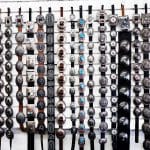

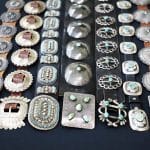


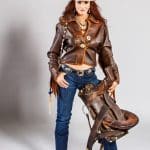
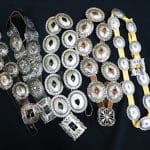

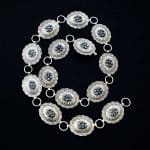



Related posts: